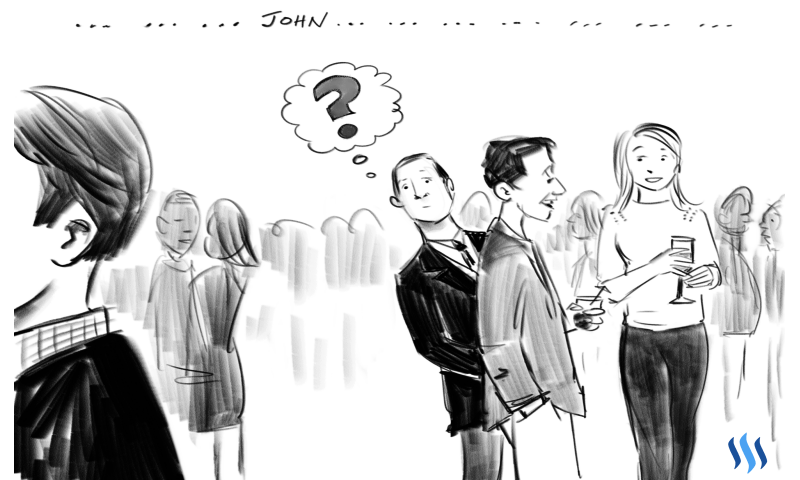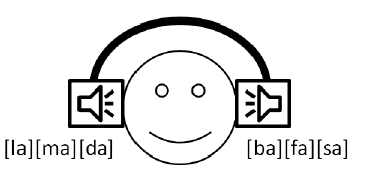Psychology Addict # 9 | A Theoretical Model of Attention – The early studies.

Over one hundred years ago William James defined attention in a way that emphasized the most important aspect of this cognitive process: that a person cannot attend to more than one thing at the same time.
Everyone knows what attention is. It is the taking possession by the mind, in clear and vivid form, of one out of what seem several simultaneously possible objects or trains of thoughts. Focalization and concentration of consciousness are of its essence. It implies withdrawal from some things in order to deal effectively with others. - William James, 1890, pp. 403-4
As we live in a time where various stimuli compete to win our focus, attention is a topic that has been inspiring more and more interest among psychologists.
This should not be a subject regarded by specialists only, however. Everybody in their daily routine needs to juggle between things at one time or another, but humans’ limited cognitive processing of resources pose a real challenge to all the multitasking.
This is precisely why we need attention!
The psychology of attention
Based on empirical work, comprised mostly by dichotic listening experiments, Broadbent developed a model of attention in 1950’s:

-Arrows = flow of stimuli
-Boxes = the systems that process information
Broadbent’s model indicated that all the stimuli present in our environment enters system 1 (the senses) in parallel. Then, the information about our environment is stored briefly before going through the selective filter – Broadbent suggested that the filtering of the information is based on the physical properties of the stimulus, for example a loud sound, and/or the feedback from what is stored in memory; such as warning signals, expectations or prior experiences. When exiting the selective filter only one piece of information enters the limited capacity channel at a time (in series) to subsequently be processed by other systems, such as storage in memory.
Limited capacity channel – where attended to information goes through for further processing. It is limited due to the amount of information it can process at one time.
Broadbent’s flow diagram on information processing theory sought to describe a theoretical model of the stages involved in attentional systems, and not the brain structures underlying it. Since him flow diagrams became the accepted way to depict mental processes that cannot be observed directly, and are still widely used today.
Refining the information processing model – The cocktail party effect

Cherry was one contemporary of Broadbent to test his theory further, also through dichotic listening experiments.
Although he agreed with the idea that physical characteristics (a loud bang) play an important role in the filtering stage, he pointed out that meaning is also an important factor in the process of attention. He concluded this after observing, for example, that a person can isolate and listen to one speaker when many others are speaking around them. Cherry termed this ability as the ‘cocktail party effect’ – where a stimulus is filtered because of its meaning.
A widely used example to illustrate this notion is that of when one hears their name in a coffee-bar.
While talking to someone else if a person hears their name, they immediately turn to where the name came from. The person turns not because it was necessarily loud (a psychical property), but because of the meaning of the stimuli.
William James stated more than a century ago ‘everyone knows what attention is’. Still, there seems to be a lack of understanding about the limitations of such cognitive processes. Limitations that have implications in our day-to-day lives and that put at risk our own safety and that of others.
What has been learnt from the aforementioned studies?
- That physical characteristics, content and meaning are all determiners that influence the allocation of attention.
- There is a limit to the amount of stimuli/information people can attend to.
- The terminology ‘filter’ is used to imply the idea that some information gets through and others do not.
- Broadbent put forward the first verifiable approach to attention; which encouraged many others to experiment and test it.
- The model designed by Broadbent has been developed and continues to be refined to incorporate new findings.
Reference List
Broadbent, D.E (1958) Perception and Communication, London, Pergamon.
Cherry, E.C (1953) ‘Some experiments on the recognition of speech with one and two years’, Journal of the Acoustical
Society of America, vol. 25, no. 5, pp. 975-9.
James, W. (1890) Principles of Psychology, vol. 1, New York, NY, Holt.
Image sources - researchgate.net & edtech.engineering.utoronto.ca/
Insightful as always. Have to share this to my followers.
THANK YOU my friend! I am your big fan... you know that. A compliment coming from you is more than flattering! I am so glad you like it :) I really appreciate your support.
All the best always.
😊 It's all about you! I admire your works a whole lot. ❤
❤
Very informative article Abigail, thanks for sharing.
Your post has now brought my attention to the fact that I believe one of my "filters" maybe malfunctioning and not letting in all the information I am receiving, (my wife half agrees, but tells me to read the post again without "whatsapping" at the same time and I´ll find the answer to my problem).
;-)
Thank you @bistonic! But I am not happy to hear you read my post while whatsapping at the same time! ;)
Let me tell you that I really appreciate that you always stop by :)
Best!
This post has received a 4.35 % upvote from @buildawhale thanks to: @trumpman. Send 0.100 or more SBD to @buildawhale with a post link in the memo field to bid on the next vote.
To support our curation initiative, please vote on my owner, @themarkymark, as a Steem Witness